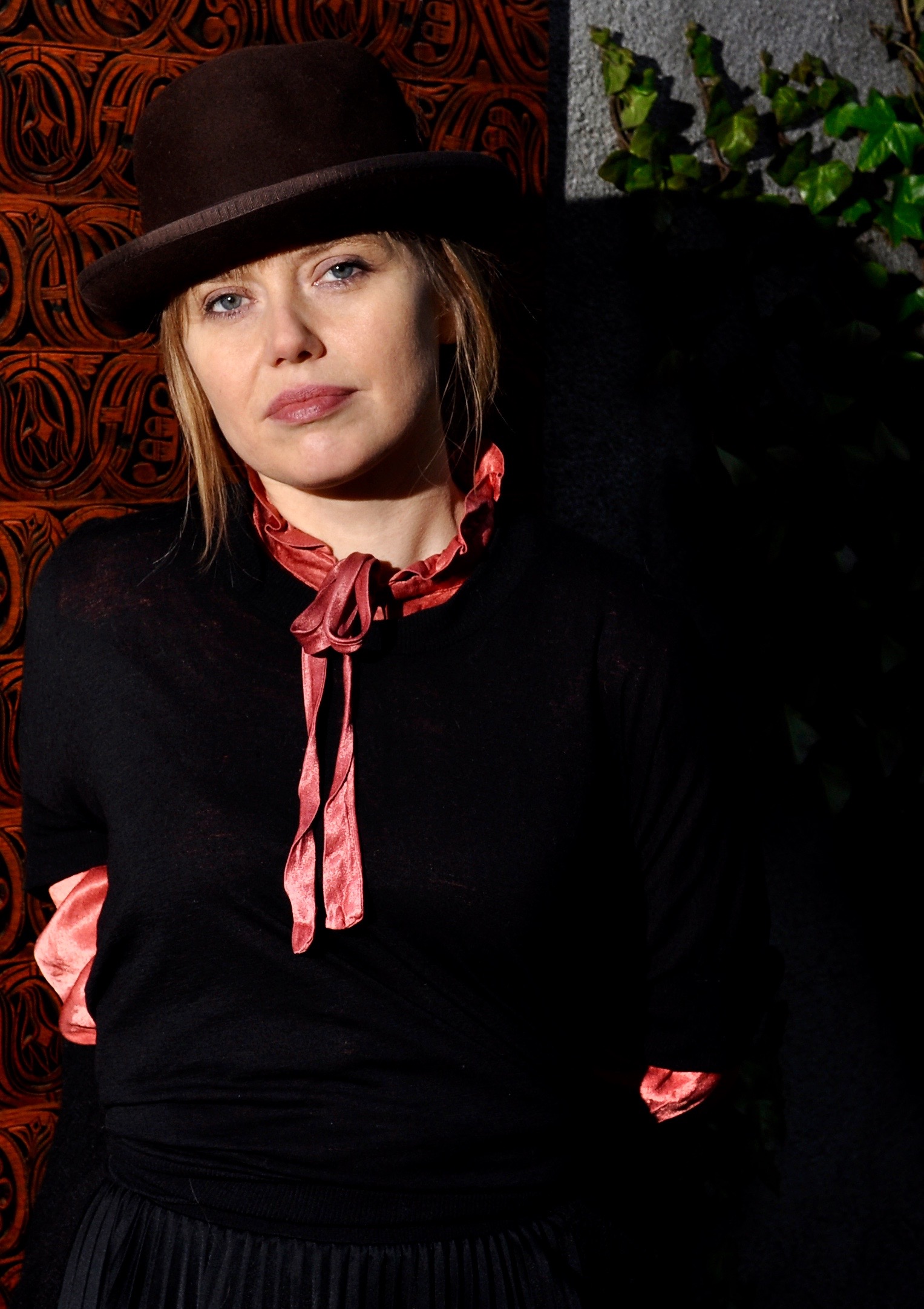MELODY NIXON interviews ODDNY EIR
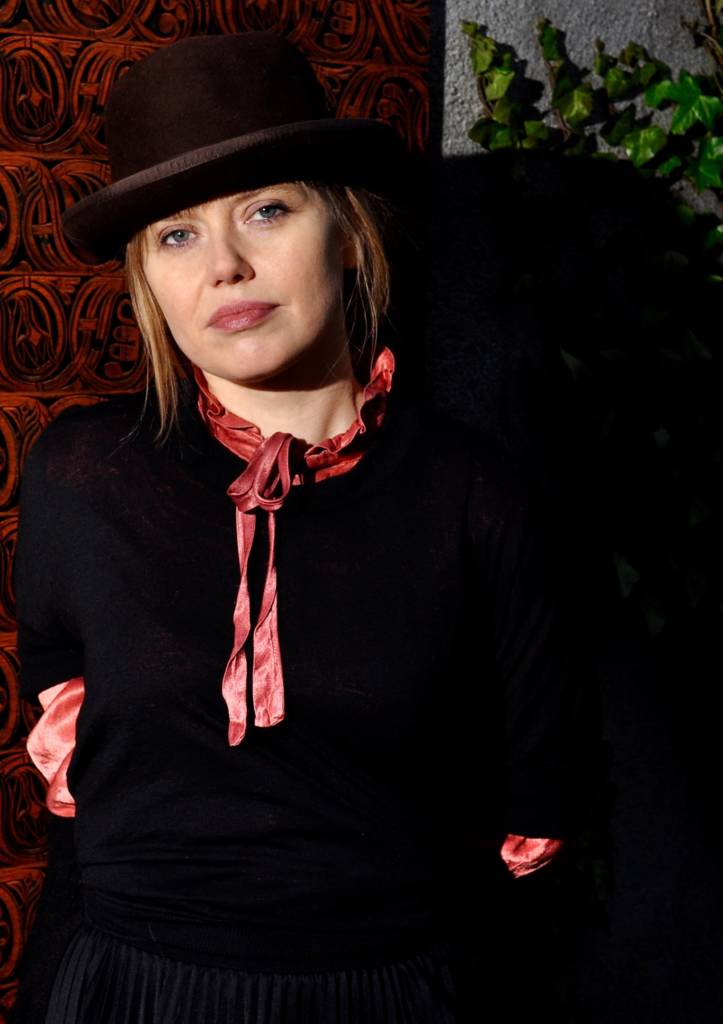
In this month’s interview, Melody Nixon speaks with Icelandic author Oddný Eir about feminism and writing, folklore, and tyranny. Eir’s latest book of auto-fiction, Land of Love and Ruins, is a work of diaristic essay, lyric collage, and rumination. Collaborator Björk describes Eir as “a true pioneer.” Eir appeared this week in New York City’s PEN World Voices Festival on Gender and Power.
Melody Nixon (MN): Can you tell me about the place you live in Iceland?
Oddný Eir (OE): I live by the sea now, but in Reykjavík. I moved here from the countryside in the south. I still have my sheep and goats there. I go back to the countryside and then back to the city, back and forth. I thought I could settle down there, I left the city with ceremony, but I need to be in both places.
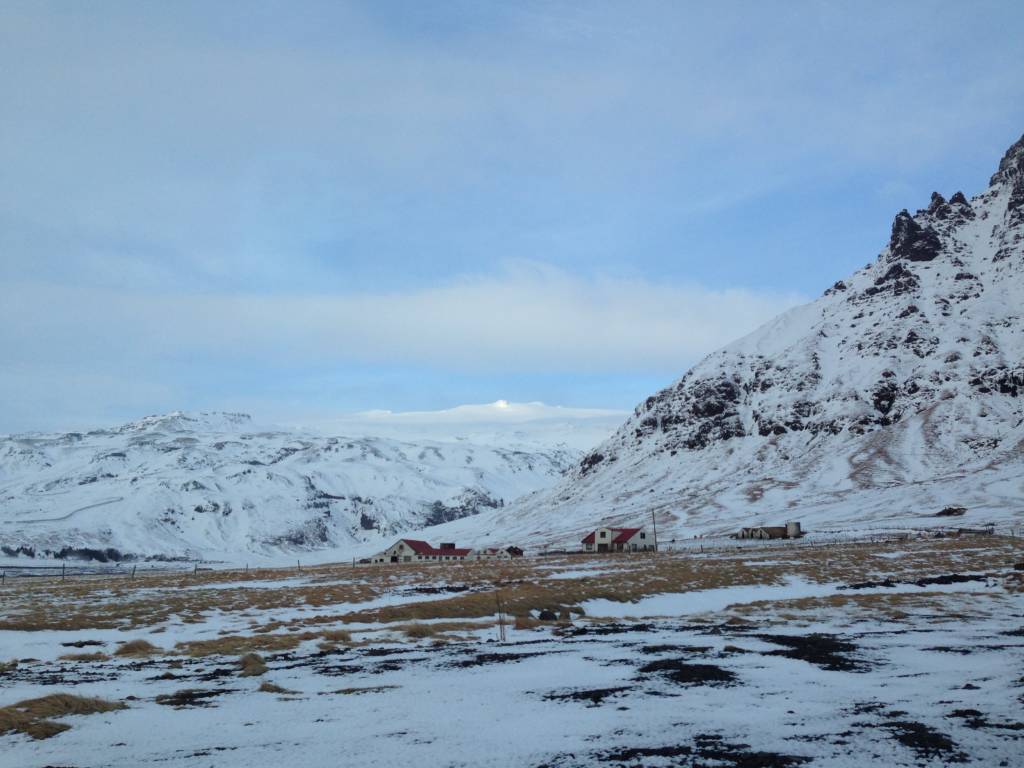
MN: Land of Love and Ruins is set in Iceland—I learned a lot about the country by reading it—and seems too to be set very close to your personal experience. The book is categorized as a novel in the US: how would you describe it? Memoir? Autobiography? Autobiographical fiction?
OE: I think I would say autobiographical fiction or auto-fiction. When I was asked in Iceland what I was publishing I would answer boldly that it was autobiography. At that time, when I started in 2004, it [was] both bold and absurd to say that—[especially as] a young woman who had not lead as extraordinary a life as all the political males that used to publish their autobiographies before Christmas in Iceland. There had been other autobiographies but mainly in the 19th century, by poor farmers. My idea was to point out that every life is extraordinary and an autobiography could talk about the anxiety and gender confusion of a young woman as well as the great deeds of old men. Land of Love and Ruins is my third autobiography or auto-fiction.
MN: The book is a spontaneous and energetic work, with the evanescence of a first draft or notes jotted on the page. Its messy, diary-like form speaks of the everyday world and of scattered, gritty, real-life psychology. Could you talk about your process writing this book? Did it take many drafts?
OE: I think it’s an interesting question. It heats me up. My preparation for being a writer was always writing a diary, and many letters—because I was living abroad for many years. Thousands of emails, but before email: hand-written letters. I think the diary was important for me because it was like a performance, I could not rewrite or erase. I had to just continue, and write quite fast by hand. The same with letters.
I studied in the academy for many years, and there you cannot allow yourself to write in a spontaneous way. For me that was an interesting restraint. I had some conflict between my need for spontaneity and this heavy, troubled way of writing: always thinking of the other that will criticize you. And you have to find proofs. A complex mode. The same passion drives those two types of writing, in my case. But the form is very different.
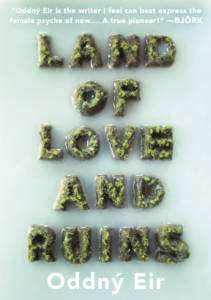
MN: So you stepped out of academia. That must have been freeing for you?
OE: Leaving the academy and publishing novels was such a liberty for me. I had been in a prison, being in a French academy, even though it was a very lively and beautiful prison. It made me think about Marquis De Sade.
Through this experience of “just writing,” and not for any kind of scholarly exam, I quickly found the old joy that came from writing my diary and writing letters to close friends—you know, that you can just tell them everything, and you have to tell them everything. And you’re far away so you have to tell them everything very fast. Because you want to grasp the totality of things by small means. Getting into detail sometimes, but allowing yourself to jump from one thing to another.
It seems that you are mad if you are writing down everything that you are thinking in one day, especially if you’re doing it at a time of crisis in your life, and maybe also in society—it’s like you’re so burdened by thoughts you’re in a mania. You jump from one thought to another. But I realized that this is how I, or we, think. At least women, many women I know, they think like this. When I meet my good girlfriends we talk like this. We do not even finish phrases. So this is also a kind of feminine thing, too. We are so eager to understand and get close to one another, it’s like a dance. You just start with something and then you jump into something else to make a movement. For me it’s circular.
MN: I’m glad you brought up gender. I do think of writing in this form as a political act, because “the diary” is such a gendered form. And you have writers in the US like Sarah Manguso, with her work Ongoingness, which contains excerpts of a 800,000 word document that she’s been keeping as her diary for the last 25 years. She uses the form as a reassertion of this stereotypically female form, taking it from the private sphere where it has always existed, and bringing it into the public, traditionally male domain of publishing. So I was wondering if there is a deliberate gendered, and political, element to your work in this way?
OE: Yes, that’s beautifully said… taking it from the private domain into the public. This is what I wrote about in my thesis. I have had this political aim since I started writing. But strangely enough I think nobody realized. You know, I remember when Philippe Lejeune visited my research center in the university of EHESS in Paris, after he had established the Association for Autobiography and Autobiographical Heritage. It was early morning in a basement and he talked about all these manuscripts he had been collecting, all these autobiographies. It stuck me so strongly that I had this same desire—to collect all the autobiographies of Iceland, mainly by women, that will never be published. Those that are or were the outcast texts, our marginal memory.
MN: Your book contains many layers of politics. That’s partly what grabbed me. Obviously you have a background in political philosophy from the University of Iceland and the Sorbonne, so that got me thinking: she has a real awareness of political context here. Could talk about the cultural-political act inherent in setting the book in the post-2007 economic crisis in Iceland? The ways that the economic crisis and recession are present in the characters’ discussions, actions, and organizing?
OE: If you are a woman and you are conscious and really willing to understand and even to change yourself and the world, there is always this mix of your private life and the political. Maybe this is very feminine. Your bond to your family and to the world—it’s just natural that you’re thinking about your environment. And if there is a crisis it’s just natural that you try to find some solutions to it. Not by making manifestos or making big speeches, but by trying to understand in conversation what is happening and what has happened to us, our home life, or our social life. My book, this book, was written based on conversations I had with my friends. Mostly women, but also with my brother. The diary is not only private, just talking to yourself. You’re also trying to render this spark of the conversations that you have had during the day. These conversations can be about very private matters and very political matters.
MN: Were you yourself politically active while writing the book?
OE: I happened to have been very political just before publishing this book. It was a little bit before the crisis. Because you know the crisis just started one day, in autumn. But just before that we had been worried about the course that Iceland was on, environmentally. So a friend of mine and I just “threw ourselves into the batter.” Our way of being political was to blend many things together. We were always discussing both public and private political matters. So for me it was all somehow mixed up in this time in my very politically active period. It was also privately very rich, a socially very rich time of conversations.
MN: You posit the idea that Icelandic folklore is a solution, in a way, to the devastation of the Icelandic economy post-2007. It is a response to the globalizing, hyper-capitalist force that insists on sameness and has created the economic crisis that balloons in America and arrives in Iceland. Why do you think folklore can be a solution?
OE: It’s an interesting idea that folklore could be an answer to globalization, but I’m not sure it’s my idea, or only partly. I’ve never thought about it this way, until your sensual question. I remember when I was living in Budapest just after the fall of the Berlin wall and the communist regime; there was this great openness. And this influenced me a lot. I was staying a lot with the gay community, because with them I could dance freely and not talk so much. But there I met a woman that became my best friend and she was a woman psychologist, bisexual, and through her I would start to talk and then listen to the enormously interesting stories of this long period of repression. Then I remembered I was interested in Hungarian folklore, in the dances and music. Some of the people from this open community were amazed that I was interested in the folklore. They maybe thought, “This belongs to the past,”—because the folkloric style had been used by nationalists and communists. I was in my head trying to answer, “I think it’s not fair,” (and I was thinking of my Icelandic grandmother), “it’s not fair to take all this heritage, this poetry and music, and throw it away alongside totalitarianism. It’s not fair. I think we have deconstruct here, to keep our times open to the folklore of every time, also of our own times.
This is what I was trying to do here in Land of Love and Ruins. In the book I’m saying, it’s not only about “going back” to the folklore or conserving it, it’s also about breaking through the tyrannical hierarchy that perverts our classifications.
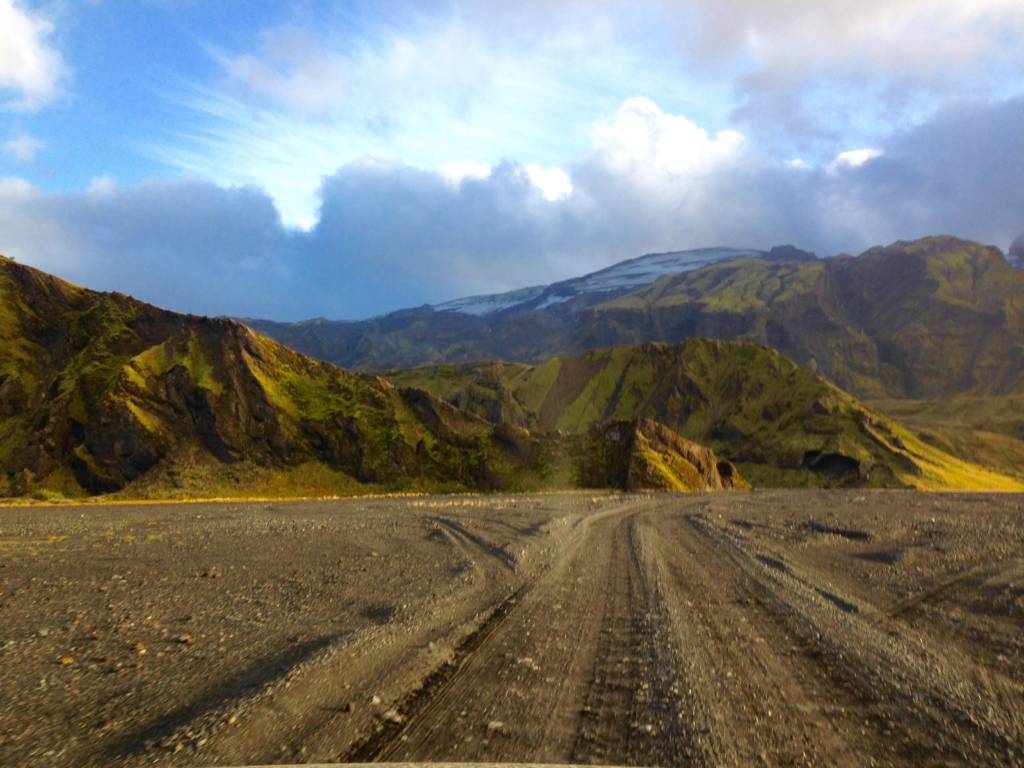
MN: Did you intend to have an investigation of politics and economics in the book?
OE: That’s a very difficult question… whether I intended it, or it was already there. I think both. It’s very much this act of performance of writing or rewriting those days where the public and the private were so mixed up. Of course by doing that, I knew that the political would come in. But my intention was not to make a political manifesto or statement at all. There are so many things that I could have mentioned, but I just mentioned the political things that touched me so personally at the very moment of the writing.
Also, talking about process, even though it’s a diary, it’s pretty structured.
MN: Very much so. Around the passing of the folkloric festivals and stages of the moon.
OE: I was by then using the official Icelandic calendar or almanac that is based on the Roman one, and little by little I changed it from the official calendar into a private calendar.
MN: Some titles drawn from your private calendar: A Murder of Ravens. Stone Bramble Burying. Jupiter Nights.
OE: This is also a bit political. Why should we have a calendar full of days that we don’t even understand? With men that were like, the Archbishop of Rome in 300 A.D.? And this guides our life? I’m not saying we should get rid of the traditional calendar. It’s not either/or. I also like the old traditional calendar; I try to get into it and understand those saints. I try to bring them into my life as friends. Certainly St. Bridget is close to me because she is the saint of printing machines and milk factories and breastfeeding mothers… It’s absurd and funny, but that makes it more real to me. You have somehow entered the old system by the way of the poetry.
MN: I really like how you brought up openness, particularly that which you experienced in Hungary around the time of perestroika. There’s a section of your book this brings to mind, on pg. 39: “I always dream of it, that something will open my eyes, and open everything inside me as well.” We all seek moments like this, whether we describe them as political, private, transcendent, moments of realization or vulnerability. How does this theme of openness carry through your book?
OE: It carries through all my books, and will for a while. Because I haven’t yet answered the question: “Why is it that openness is so touching and important?” I wrote a little text that was published in World Literature Today about art, and I said that when reading academic texts, if there are the words “openness” and “movement” on the same page, or you could feel in an artwork, or in a person, both openness and movement, you would feel so excited: so willing to listen and stay and to take part. But of course you have to ask yourself, if you are moving into the open, and everything is movement, where are you moving to? I guess something is lacking. I guess it’s love. It’s really important to have openness, movement, and love.
MN: In addition to writing, you collaborate with visual artists and musicians, most famously with Björk. Is this theme—openness, movement, and love—one that you explore across artistic disciplines?
OE: Yes, this is something I feel is almost a criterion for my collaborations. I’ve worked a lot with my mother, she is an artist and we are working on a big art-book project. I’ve understood that if you want to work so intensively with someone you know so intimately you constantly need to activate openness, movement and love.
In Land of Love and Ruins this question of opening and expanding was very important… finding a place where you can have all perspectives brought out, also in a political and democratic sense. The characters in the book are really struggling for a plural voice, a place where everyone is heard. You see this too in the home, where of course you want everybody to be heard. You do not want tyranny in your family life. Family life and political life are so similar—you do not want anyone to dominate. Openness is the ideal that everyone can always have a say, and that you can always say what you need to say. This is the serious concern of openness, which is not only poetic and artistic. During oppression, domination, tyranny, violence (and domestic violence), we dream of an openness, where we can say what we want without being punished. But during free times, where we have democracy, or at least we think we live in one, then the question of openness is not enough. You can maybe express yourself freely on the internet, or in public, but you’ll also need to be nurturing something other than hate.
MN: I’m curious about the day-to-day reality and the texture of life in Iceland during and after the financial crisis, when there was a closing down—literally, in terms of the free market failing, and people’s financial options and prospects narrowing and closing down. That sort of economic stress often carries emotional, psychological stress alongside it, which may provoke anger and violence. Was love preserved? How did this context affect art: your own art, and the wider climate for Icelandic artists and writers?
OE: It was serious enough, not only in Iceland but in many places, that people lost their homes. So, because of the adventures of banksters, normal people lost their homes, and older and younger people lost their savings. This was, as you say, a time of anger and resentment. I felt that also. But I do not want to write in a state of anger. I don’t know if this is a rule I set myself, or a practicality. I’ve written many articles for journals in a rage, but I usually do not publish them. For me it is more potent to transform the anger into something playful. I let the anger be there, I’m not trying to prevent myself from feeling it, but I go along with it, and wait until it transforms into something more absurd, or playful, or poetic. And I think this was what happened not only for me in this book, but also for artists in Iceland. They would become political, first very angry, then in a more playful way. Suddenly, the term political changed. People who would never do anything political in their life—not even vote—would become very active in the public space. And many artists did and the political scene changed because a lot of creative people went into politics. I don’t know what became of them!
MN: From a US perspective, Icelandic literature has really come into our consciousness in the last ten years. It’s experienced a surge of recognition. Partly due to Nobel Prizer-winner Halldór Laxness coming back on the radar, partly to do with your Scandinavian neighbors being read more and more. Do you think a revitalization in literature is taking place in Iceland at the moment, or is this simply a translation issue, an American market issue?
OE: Somehow writers are never in groups. You don’t go around activating writers, they activate themselves. In the crisis Icelandic writers were very active, without losing their cool, and they still are now because we still have a political state that is in crisis. But if that’s a renewal, I’m not sure. I guess the writers and the artists are also in some kind of a crisis.
MN: It may be that Icelandic work is simply coming onto the US radar, because of Laxness and because of new translations and translation presses.
OE: It’s so good for Icelandic writers to be translated into English, as you can imagine. It’s not so common even to be translated in general. It’s a good feeling to know that what you wrote is read in another language, and to read it, if you are able to read it.
MN: One last question on The Land of Love and Ruins: you used a form of accruing short essays: a form that’s popular in innovative literary nonfiction in the US right now. Your work calls to mind authors like Lidia Yuknavitch, Sarah Manguso, Abigail Thomas, and Jo Ann Beard, all of whom have used a similar form. In his review for the Los Angeles Times, Justin Taylor mentions parallels with the works of Jenny Offill, Eileen Myles, Maggie Nelson, and Lynne Tillman. Did you read any nonfiction America writers before or during the process of writing this book?
OE: No. I’m sorry! For The Land of Love and Ruins I was reading old writings by Icelandic women, in order to try to understand an intimacy of tone. And also journal writers like Anaïs Nin and Virginia Woolf, and old mystic monks and nuns. So I was in the past. Now I guess it’s time to get to the present and start reading.
MN: Perhaps the traditionally feminine diary form endures, translates (and inspires) across cultures and time periods.
Back in the present, I’d like to throw in a wild-card question to end. If you could take a magic pill that would make your writing better in any way possible, what would it do?
OE: I would make the process of editing shorter. I think my writing process is in three parts. I enjoy all of them but the third one is so exhausting and I would love to use the magic pill to shorten the third phase. In the beginning I build a structure or I study processes, for example I studied perfume-making processes for my second book (its subtitle: a perfume report). I get into my obsessions and I make drawings. I listen to my dreams and dwell in nature, I stay in company with good people and I try to enter the space in my heart that is closed. I try to open and see what’s there, what needs to be done to clean out the sorrow that tends to darken hearts. This is the first period and I enjoy it a lot.
When I’ve got the mold, the mental mold, I start pouring into it. I try to let my writing flow into it automatically. Here I would love to be able to push the print-button. But then I rework the writing, trying to fit it properly into the scaffolding. This is problematic; it’s quite a difficult stage, and I get very obsessed with corrections. I bore my editor and send thousands of notes. It’s tiring. But my writing is so bad in the beginning that I cannot imagine skipping this third part of the process! So I guess I would use the magic pill to stop editing the book after it’s being printed and just trust in it.
Oddný Eir’s novel Land of Love and Ruins was published by Restless Books in 2016.
Melody Nixon is the Interviews Editor for The Common.
Photo credits: Oddný Eir’s headshot by Heidar Kristjansson; images of Iceland by Oddný Eir.
